
New Photos
August 13, 2006
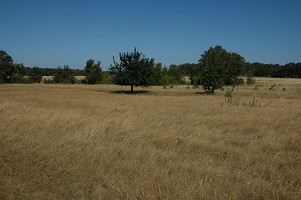 |
|
| This view of the near meadow shows how dry the grasses are this mid-August. Nearby the grass is mostly dropseed, with some buffalograss, and some white tridens near the two little trees. The only green grasses right now are the tallgrasses, none of which are in this view. However, many of the native grasses would green up in a few days if we got some rain. | |
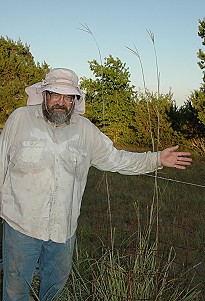 |
|
| This shot, taken in late evening, doesn't show that the leaves of this big bluestem clump are still green, but does show the flowering stalks high over Richard's head. This grass is one of the four big tallgrass dominants, the queen of the prairie in its original state, and is one of the root transplants that we put out several years ago. It had one wet summer (2004) and a dry summer (2005) and seems to be handling this second dry summer very well. | |
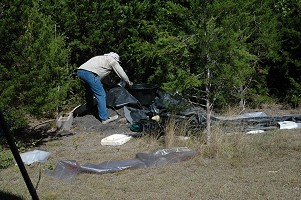 |
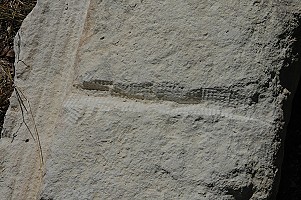 |
| Richard working on the water feature at Owl Pavilion. He's leveling the upper basin. The white patch near his feet is the rock over which water will flow. Its support is two steel T-posts laid across stacks of concrete blocks. | This is the "flow-over" rock, with the groove that I chiseled into its upper surface, for the tubing to lay in. At the left margin, you can see three little notches cut to encourage a split (and therefore acoustically interesting) drip. Another flat rock will sit on top of this one, so that it should look as if the water is coming out of a natural gap in the rock. That's the idea, anyway. |
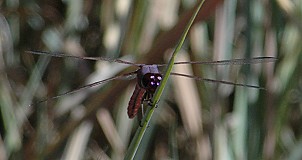 |
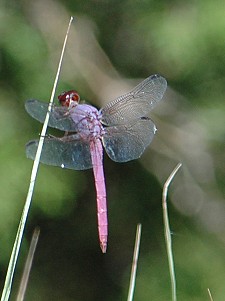 |
| Roseate Skimmers, Orthemis ferruginea, are gorgeous fairly large dragonflies; they appear around here late in the season. We were at Owl Pavilion Friday morning, and this one was flying around, patrolling the water in the artificial stream. A male roseate skimmer's face is dark metallic purple. | The male's thorax is pale blue, while the abdomen is lavender-pink. In flight, they look purple-pink all over. Several years ago, I got a blurry picture of a male perched beside a puddle, very late in the fall...so I was delighted to do better with this one. |
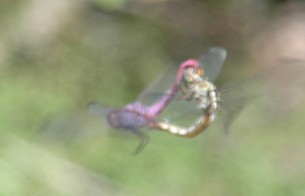 |
|
| Suddenly, the female appeared, swooping in toward the water as if to lay eggs, and the male immediately grabbed her by the back of the head. While in flight, she curled her abdomen up under his, to get his sperm from his secondary sex organ: this is called the "wheel formation" and I was lucky to get a picture of it at all--you can tell what's happening even though it's blurry. I didn't get a clear picture of her, but she looks golden with perhaps some white, much like the female neon skimmer. | |
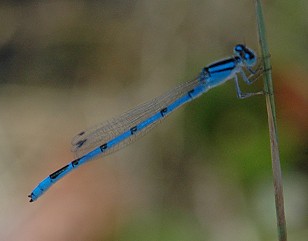 |
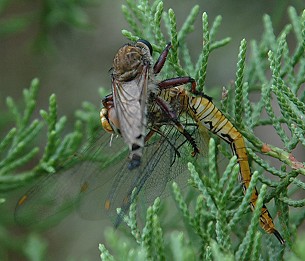 |
| On the way back to the house, we startled a Common Bluet, Enallagma civile, out of the grass. It wanted to stay in the shadows of our legs, which made photographing it tricky. | From last week: Dragonflies are predators, but they are also prey. Here, a robberfly, probably in the genus Promachus, has caught a big Wandering Glider, Pantala flavescens. In the SW meadow area, where I found this pair, dragonflies are prey for swallows, in the more open parts, and robber flies and spiders when they perch in trees. |
![]()

